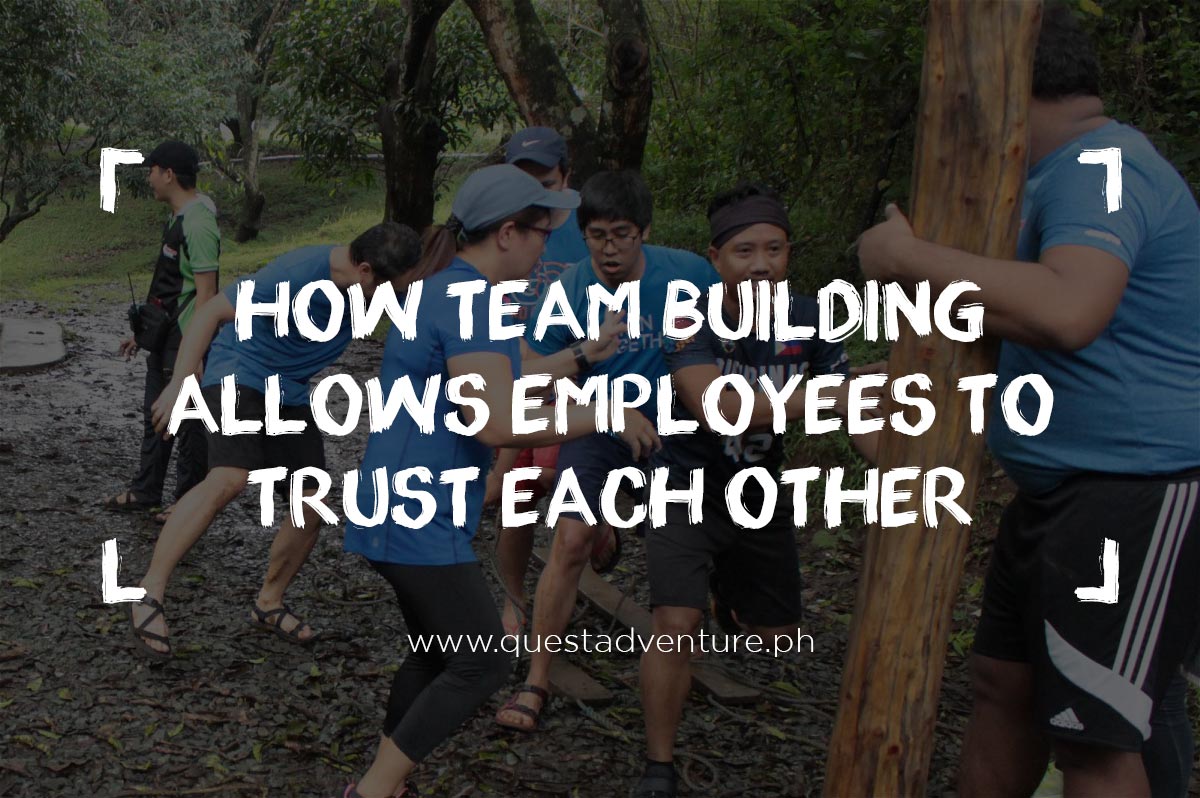
How Team Building Allows Employees to Trust Each Other
Trust is deemed as one of the building blocks of a business or an organization. So much so that it can make or break a company culture.
Stephen Covey, in his book The Speed of Trust, defines trust as having confidence in other people. You believe in their integrity and abilities.
Nonetheless, trust is an attribute that is difficult to measure and delicate to maintain. Not to mention that it takes a long time to develop only to be broken by just a single event.
Thus, various team building activities are meant to cultivate trust among employees. How is that possible? Keep on reading below:
Brings Your Employees Together
Paul Santagata, Head of Industry at Google, once said, “There’s no team without trust.”
However, you cannot expect a group of random people to get along well with each other the moment you put them in a room. That’s said, the best way to bring your employees together is by organizing team building activities.
For one, it allows your employees to know each other outside of work.
Sure, you know that one guy who works in the IT department. But do you know that he loves hiking? What about that lady in the Accounting department, who happened to have a daughter the same age as yours? You might even be surprised to know that you and your HR went to the same college.
These are just some of the things that you can learn about your colleagues outside of the work environment. Thus, make sure to organize activities that will enable every one of you to connect with each other casually.
Fosters Open Communication
One of the many benefits of team building is improved communication between employees.
According to The Palmer Group, an employment agency based in Iowa, “Open communication allows your employees to be more engaged and understand that what they do matters in the success of the business.”
Activities that are fun and enjoyable allows a person to know his colleagues more, focus on what they have in common, and understand them better. In addition, you can organize activities that allow employees to understand the big picture.
It can be as simple as conducting a Myers-Briggs Personality Test or the DISC Personality Test and then explain to employees what their personalities mean, as well as how other personalities should be treated.
For the adventurous ones, you can conduct a Night Trail obstacle course. Blindfold your employees and let them grab on a rope. And then have them navigate the obstacle course with the help of a designated leader (or facilitator).
Bridges Gaps Between Departments
Since team building allows employees to know their colleagues from different departments, it is now easier to interact with each other.
Sure, you know that someone from the Accounting department can help answer your questions about your payslip. But do you know exactly who?
Mind you, not everyone in the IT department is equipped to fix a computer or a wonky internet connection.
By organizing team building activities, your employees get to know who has what knowledge, and trust that they can tap that person when needed. There is no need to be timid or intimidated when stepping in another department.
That’s because team building is not just for fun. Your employees get to meet people outside of their day-to-day role in the company, build a relationship with them, and develop a network that they can contact in the future.
Cultivates Collaboration
Many team-building activities are designed to develop collaboration among employees, working on each other’s commonalities and strengths.
Activities like playing the Life-Size Foosball allows employees to achieve goals that are bigger than an individual could take alone. Moreso, if the entire company is into fun and competitive activities.
However, it is impossible to win the game without trusting each other’s strength, as well as the decision of the designated leader.
Eventually, trust, collaboration, and communication can extend to work activities. Two employees who were on the same team during the Life-Size Foosball match and realized that they work well together can collaborate on various company projects.
Another scenario is when an employee happened to be in the same department as the designated leader of the winning team. Because of the leader’s decision-making skills, there is a great chance that other employees in his department would be willing to work with him or ask for his opinion.
Encourages Creativity
Again, trust, collaboration, and communication can extend from team building to work.
As Iain Thomson, Director of Incentive and Recognition at Sodexo puts it, “You need to employ different people with different perspectives and expertise to ‘cross-pollinate’ the organization with fresh ideas.”
You can conduct in-office games like The Agency, wherein employees are asked to create a marketing plan for whatever product you put on the table. Or you can be like Leonardo DiCaprio and ask your employees to sell you a pen.
Nonetheless, the idea here is to organize activities that permit the employees to use their imagination and bounce ideas off each other. This will encourage them to come up with a creative solution, as well as send a message that creativity in the workplace is welcome.
Improves Productivity
Micromanagement is wherein you carefully observe and control the work of your employees.
Sure, it allows you to get things done your way. However, it takes the autonomy and trusts out of your employees. It is like you are telling them that what they are doing is useless.
On the other hand, team building allows you to learn about and trust your employees’ skills.
In relation to this, Michelle Kaiser wrote, “Employees who participate in team building are more likely to ask for second opinions at work. Teams that communicate and collaborate well are more effective and efficient.”
So, if you choose to stop being a control freak and participate with your employees instead, they are work likely to ask your thoughts on a particular company initiative. Allowing them to get things done effectively and efficiently, just like how you want it.
Keep in mind that employees who trust one another make a stronger and productive team. However, you cannot throw in 10 – 20 random people in the room and expect them to get along immediately. Trust takes a while to build. Thus, you should create a community and culture that fosters trust among employees to build a strong team.








No Comments
Sorry, the comment form is closed at this time.